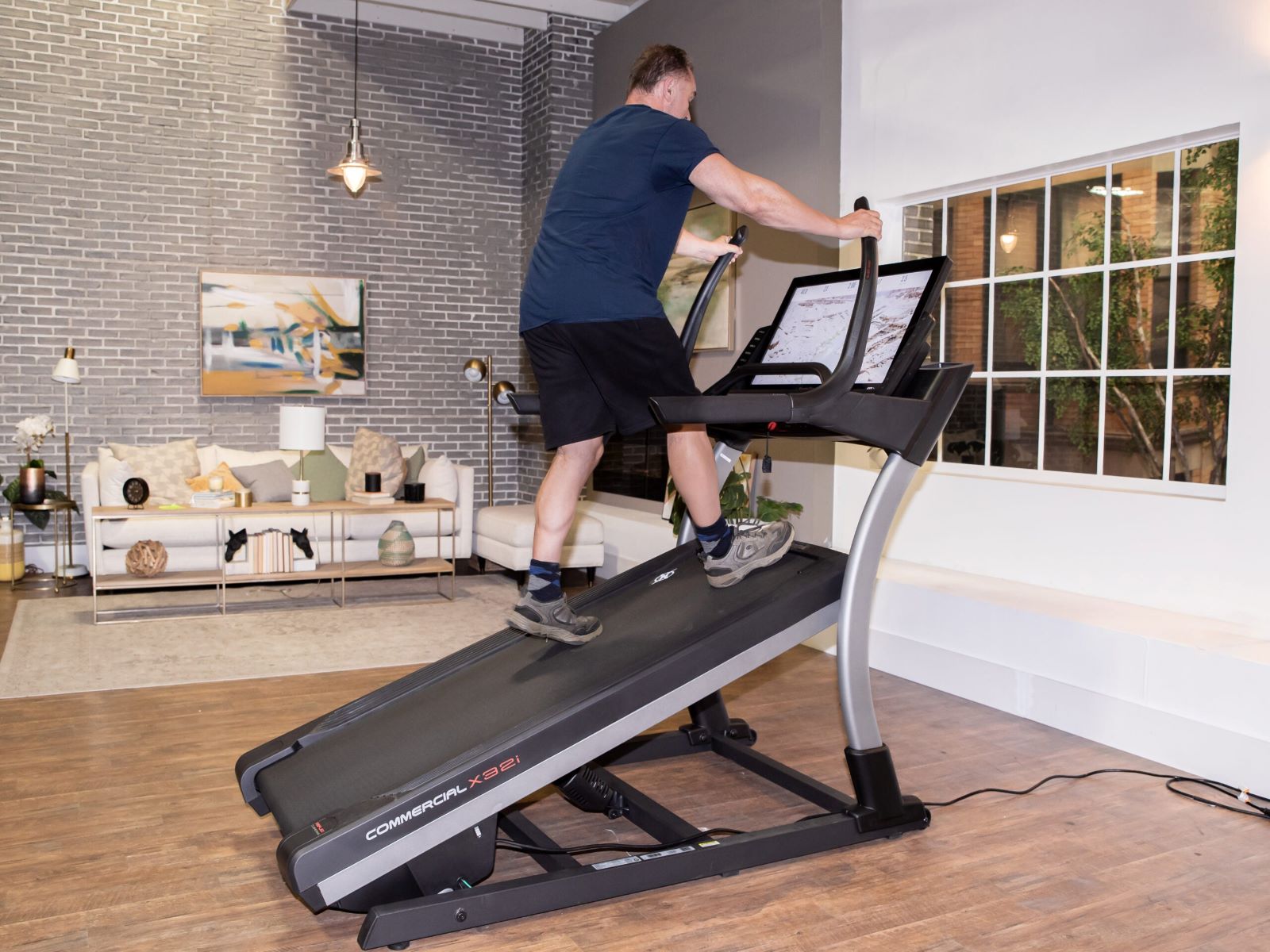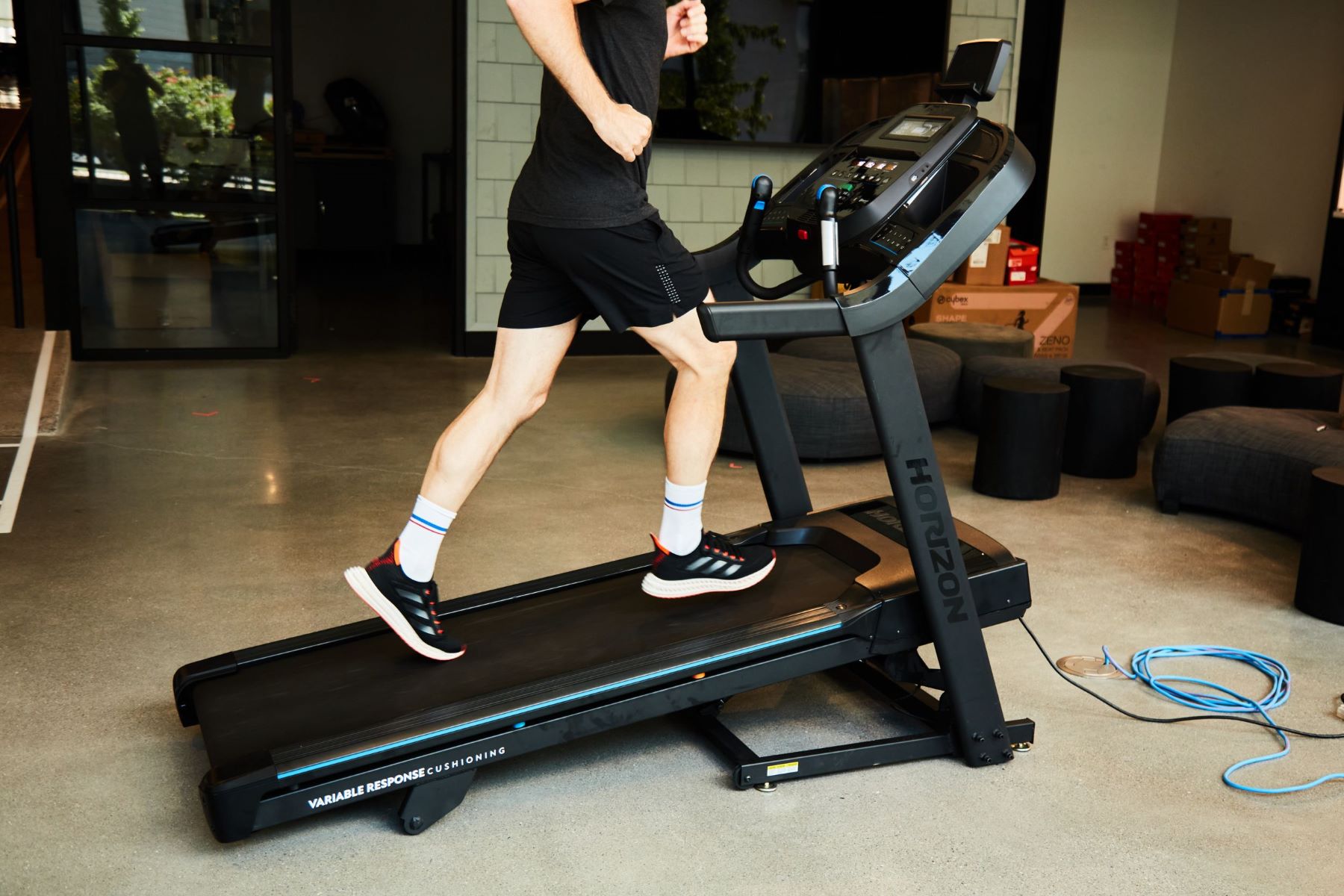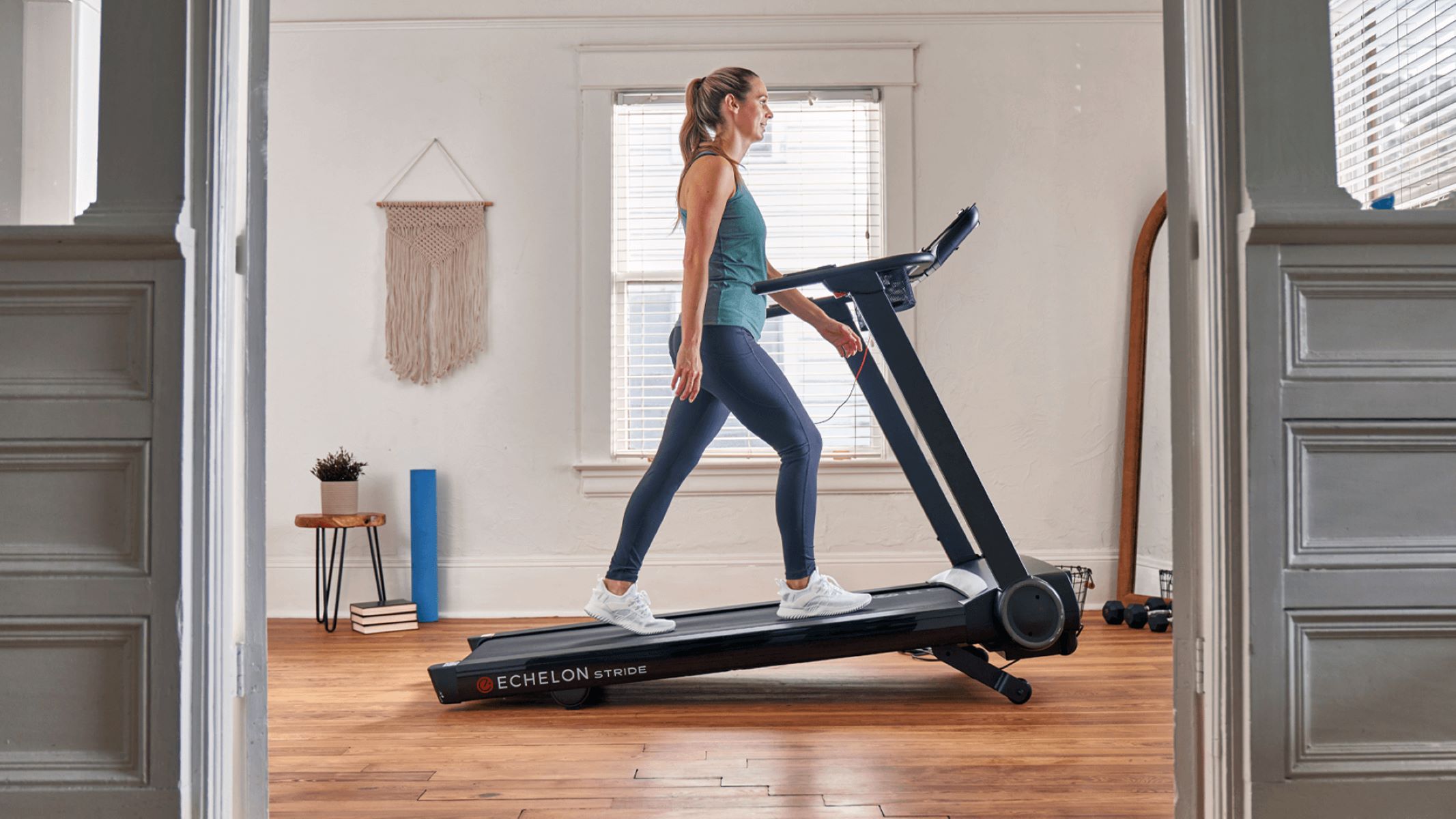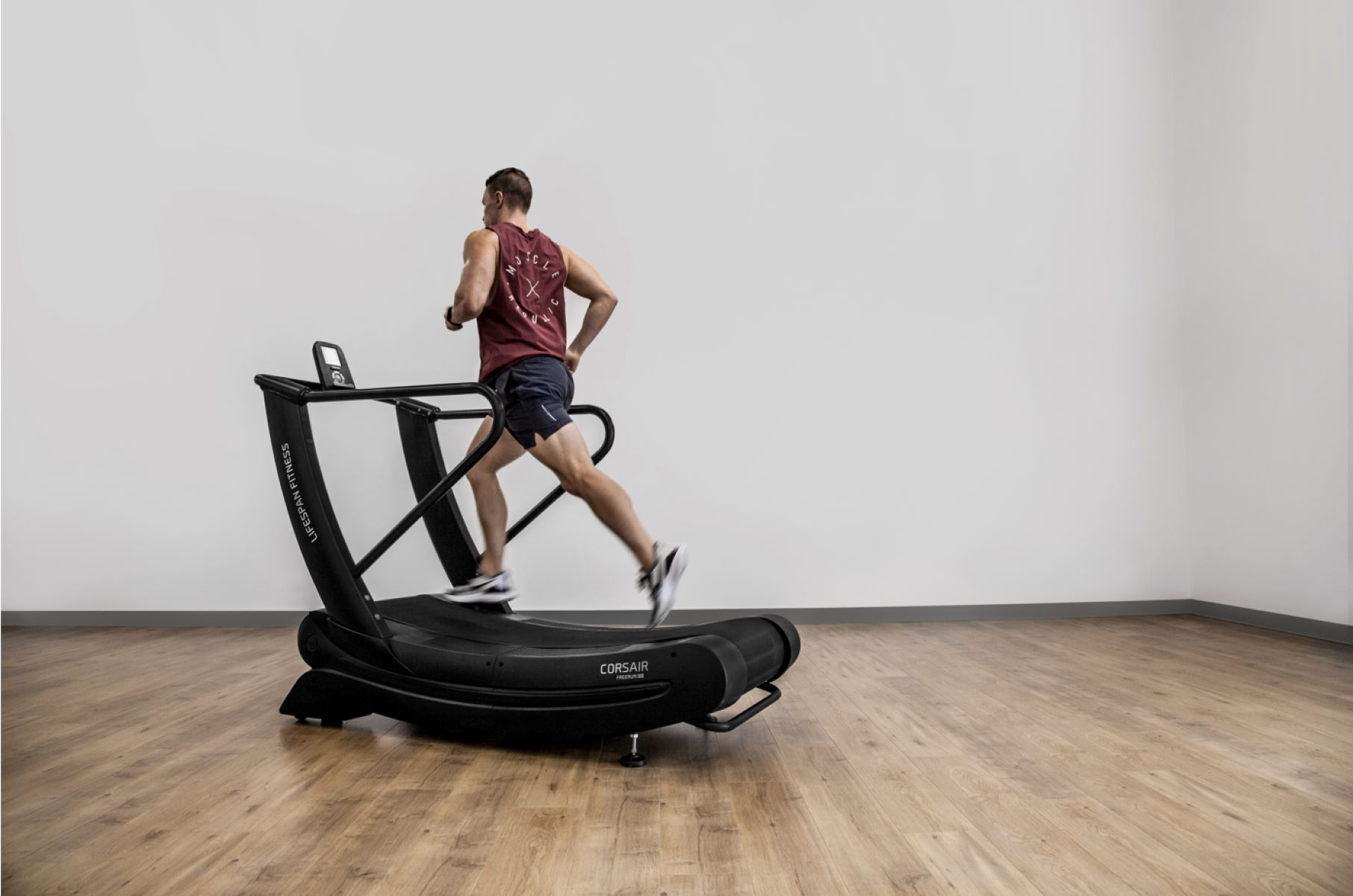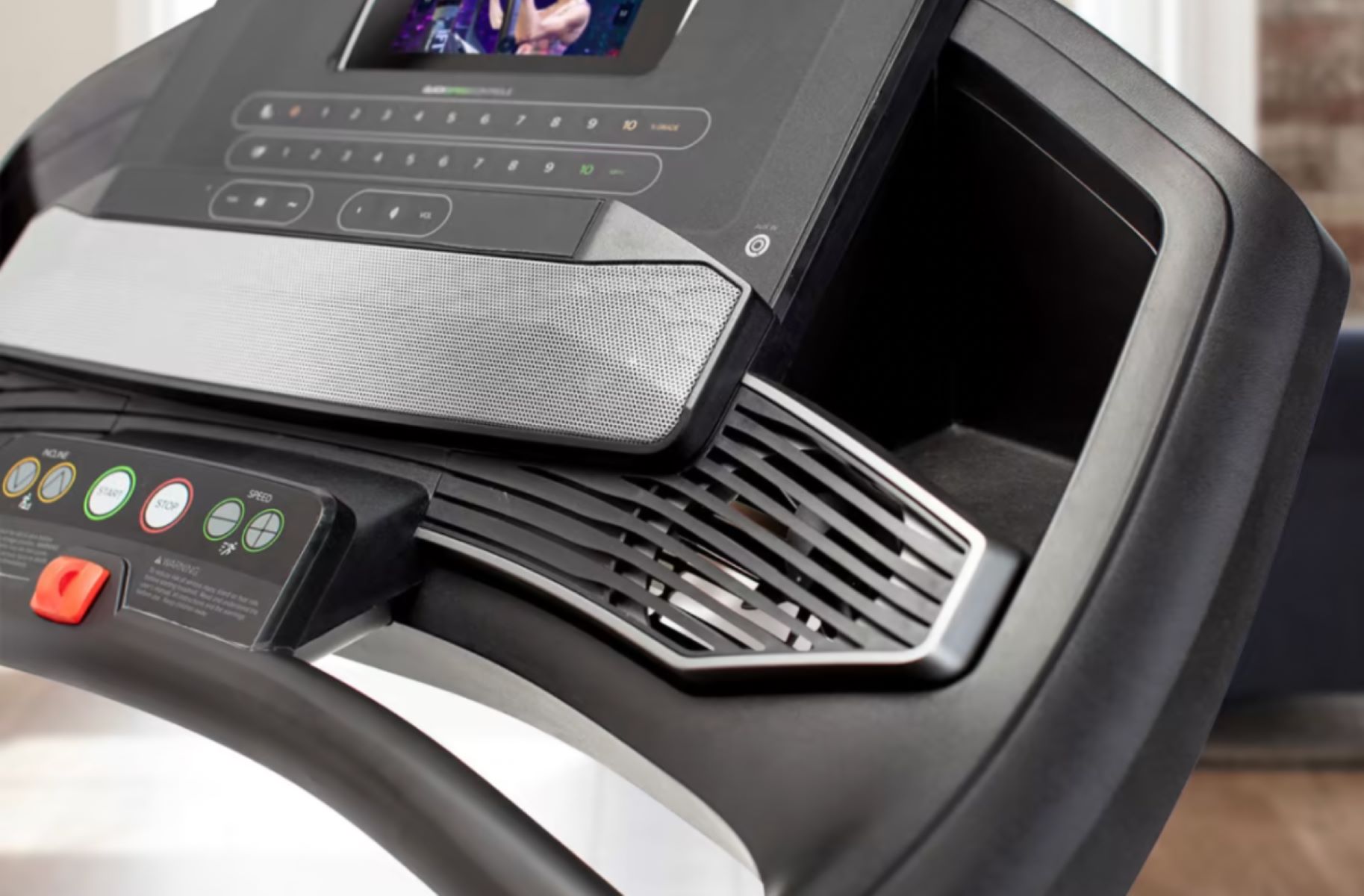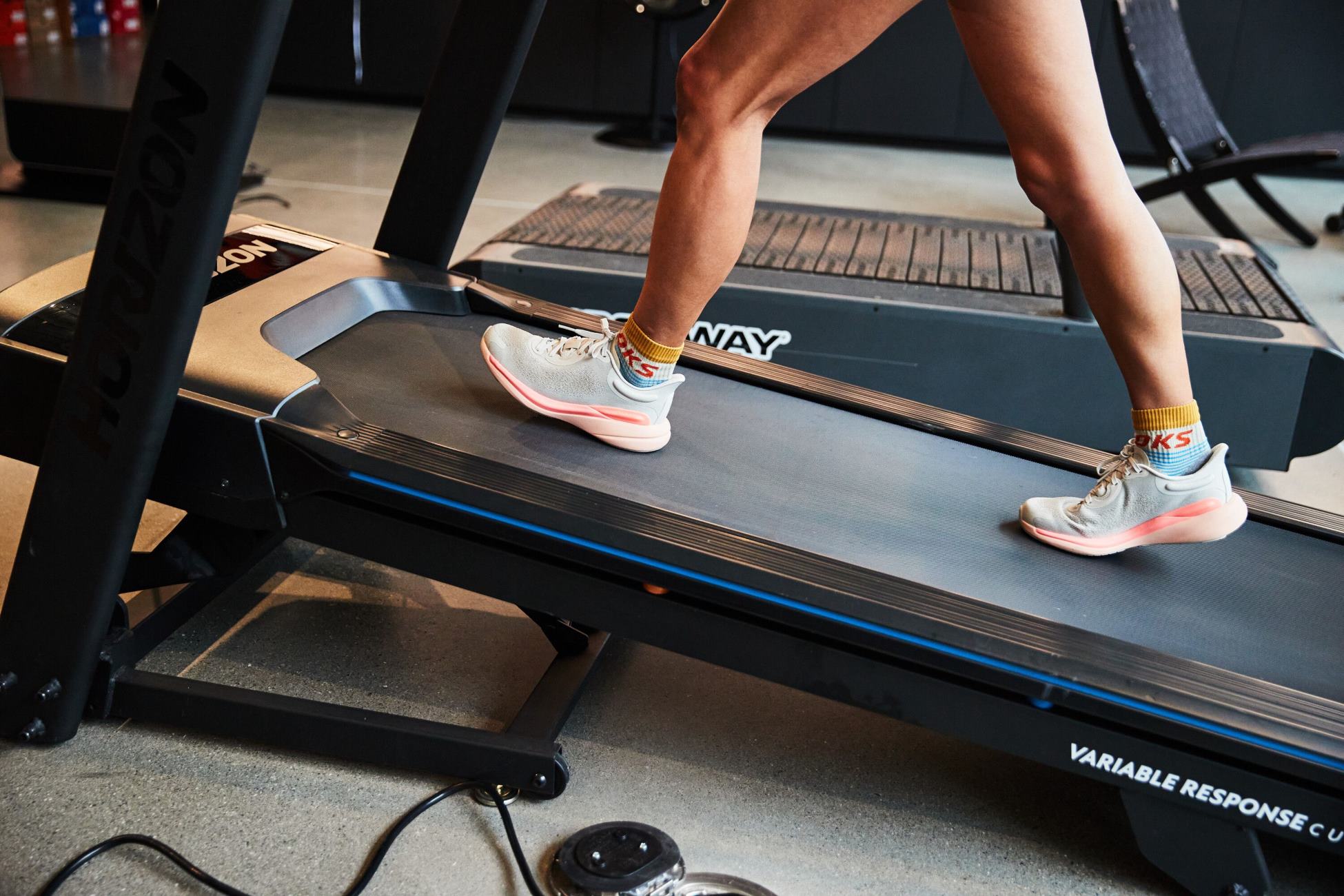

Featured
Best Incline For A Treadmill Workout
Modified: March 2, 2024
Discover how much incline on a treadmill is featured for an optimal workout. Maximize your results with the perfect incline level.
Introduction
When it comes to fitness and cardiovascular workouts, treadmills are a popular choice for many people. They offer a convenient and accessible way to improve cardiovascular health, burn calories, and get a great workout. While most people are familiar with flat treadmill surfaces, many treadmills also offer the option to incline the running surface. Incline treadmill training involves raising the front of the treadmill to simulate running or walking uphill.
The incline feature on a treadmill can provide a variety of benefits, making it an excellent addition to any workout routine. Whether you’re a seasoned athlete looking to enhance your performance or a beginner just starting on your fitness journey, incorporating incline training into your treadmill workouts can take your exercise routine to the next level.
In this article, we will dive into the world of incline treadmill training, exploring its benefits, safety considerations, recommended incline levels for different goals, proper form and technique, how to adjust the incline on a treadmill, and how to monitor intensity and progression. We will also provide sample workouts using different incline variations to help you get started.
So, if you’re ready to ramp up your treadmill workouts and maximize your results, let’s explore the world of incline treadmill training!
Benefits of Incline Treadmill Training
Incline treadmill training offers a wide range of benefits that can enhance your overall fitness and help you achieve your health and wellness goals. Here are some of the key advantages of incorporating incline training into your treadmill workouts:
1. Increased calorie burn: One of the biggest benefits of incline treadmill training is the increased calorie burn compared to walking or running on a flat surface. When you raise the incline, your muscles have to work harder to overcome the resistance, resulting in a higher energy expenditure and more calories burned. This makes incline training an effective way to accelerate weight loss and increase your metabolic rate.
2. Strengthening of lower body muscles: Incline treadmill training primarily targets the muscles in your lower body, including your calves, quadriceps, hamstrings, and glutes. By incorporating uphill walking or running into your routine, you can significantly strengthen and tone these muscles, improving your lower body strength and endurance.
3. Improved cardiovascular fitness: Incline treadmill training provides a challenging cardiovascular workout that can improve your heart health and endurance. The increased intensity of exercising on an incline raises your heart rate, stimulating your cardiovascular system and improving its efficiency over time. This can lead to better overall cardiovascular fitness, increased stamina, and improved performance in other activities.
4. Mimics outdoor conditions: Incline treadmill training is a great way to mimic the experience of walking or running uphill outdoors, especially if you live in an area with limited access to hills or steep inclines. It allows you to simulate the resistance and effort required to tackle uphill terrain, making your treadmill workouts more realistic and functional.
5. Joint-friendly workout: While incline training provides a challenging workout, it is generally gentler on your joints compared to activities like running on hard surfaces or using stair climbers. The incline on the treadmill helps absorb some of the impact and reduces the strain on your joints, making it a suitable option for individuals with joint issues or those recovering from injuries.
6. Variety and motivation: Incline treadmill training allows for a diverse range of workout options, adding variety and excitement to your routine. You can adjust the incline levels to create different intensity levels and simulate different types of terrain. This variety keeps your workouts interesting and can help to prevent boredom, keeping you motivated to stick to your fitness goals.
Overall, incline treadmill training offers a multitude of benefits for individuals of all fitness levels. Whether you’re aiming to lose weight, build strength, improve cardiovascular fitness, or enhance your athletic performance, incorporating incline training into your treadmill workouts can help you reach your goals more effectively.
Safety Considerations
While incline treadmill training can be a highly effective and beneficial form of exercise, it is important to prioritize safety to prevent injuries and ensure a positive workout experience. Here are some essential safety considerations to keep in mind when using the incline feature on a treadmill:
1. Start gradually: If you’re new to incline training, it’s important to start gradually and build up the intensity over time. Begin with a lower incline level and gradually increase it as your fitness level improves. This allows your muscles and joints to adapt to the increased resistance and reduces the risk of strain or injury.
2. Warm up and cool down: Before diving into an incline treadmill workout, it’s crucial to warm up your muscles and prepare your body for the increased intensity. Start with several minutes of walking or light jogging on a flat surface to get your blood flowing and your muscles warmed up. Similarly, after your workout, take time to cool down by gradually decreasing the incline and pace to allow your heart rate to return to its resting state.
3. Maintain proper form: Proper form is crucial when performing incline treadmill training. Be mindful of your posture, keeping your chest lifted, shoulders relaxed, and core engaged. Avoid leaning forward or holding onto the treadmill handles excessively, as this can strain your lower back and throw off your balance. Let your legs do the work and focus on maintaining a smooth and controlled stride throughout your workout.
4. Listen to your body: Pay attention to how your body feels during your incline treadmill workouts. If you experience any pain, discomfort, or dizziness, it’s important to listen to your body and adjust the intensity or stop the workout if necessary. Pushing through pain or ignoring warning signs can lead to injuries and setbacks in your fitness journey. It’s better to be cautious and seek guidance from a healthcare professional if needed.
5. Stay hydrated: Incline treadmill training can be physically demanding and may cause increased sweating. It is vital to stay hydrated by drinking water before, during, and after your workout. Carry a water bottle with you or keep a nearby water source to replenish fluids and prevent dehydration.
6. Use proper footwear: Wearing supportive and well-fitting athletic shoes is essential for ensuring stability, reducing the risk of slips or falls, and protecting your feet and ankles during incline treadmill training. Choose shoes that provide cushioning, arch support, and a good grip on the treadmill surface.
By following these safety considerations, you can minimize the risk of injuries and enjoy a safe and effective incline treadmill training experience. Remember to always prioritize your safety and listen to your body’s needs to make the most out of your workouts.
Recommended Incline Levels for Different Goals
The recommended incline level for your treadmill workouts depends on your fitness goals and current fitness level. Here are some guidelines to help you determine the appropriate incline level based on different objectives:
1. Weight loss and calorie burn: To maximize calorie burn and promote weight loss, aim for incline levels between 1% to 5%. This slight incline increases the intensity of the workout, boosting your heart rate, and increasing the number of calories burned. As you progress, gradually increase the incline level to challenge your body and continuously enhance calorie burn.
2. Endurance and cardiovascular fitness: If your goal is to improve your endurance and cardiovascular fitness, higher incline levels between 5% to 10% can be beneficial. This range provides a more challenging workout, forcing your cardiovascular system to work harder and improving your stamina over time. Incorporate interval training by alternating between higher incline levels and flat or lower incline recovery periods to further enhance your endurance.
3. Muscle toning and strength: For individuals looking to tone and strengthen their lower body muscles, incline levels between 10% to 15% are recommended. Walking or running at a steeper incline targets the muscles in your calves, glutes, quads, and hamstrings, providing an excellent workout to build strength and definition in these areas. Consider combining incline training with resistance exercises or incorporating uphill sprints for an added challenge.
4. Hill training and outdoor preparation: If you’re training for outdoor activities that involve uphill terrain, such as hiking or trail running, it’s beneficial to include incline treadmill workouts that simulate those outdoor conditions. Set the incline level between 10% to 15% or even higher, depending on the intensity and steepness of the outdoor terrain you’re preparing for. This will help familiarize your body with the demands of uphill movements and improve your overall performance.
5. Active recovery and low impact workout: Incline treadmill training can also be used as a form of active recovery or a low impact workout for individuals with joint issues or those recovering from injuries. Set the incline at a low level between 1% to 3% and focus on walking at a comfortable pace. This gentle incline helps reduce stress on the joints while still providing a beneficial workout for the cardiovascular system.
Remember, these are general recommendations, and it’s essential to listen to your body and adjust the incline level based on your individual fitness level and comfort. Always start with a lower incline and gradually increase it as you gain strength and endurance. Consulting with a fitness professional or a trainer can also provide valuable guidance to tailor your incline treadmill workouts to your specific goals and needs.
Proper Form and Technique
Maintaining proper form and technique is crucial during incline treadmill training to ensure an effective and safe workout. Here are some key tips to help you maintain proper form and technique:
1. Posture: Keep your posture upright and aligned throughout the exercise. Avoid leaning forward or hunching your shoulders. Engage your core muscles to maintain a stable and balanced position.
2. Foot placement: Place your feet firmly on the treadmill belt, ensuring that your weight is distributed evenly. Avoid landing on your heels or toes excessively. Instead, aim for a mid-foot strike with each step to maintain proper alignment and reduce the risk of injury.
3. Stride length and cadence: Find a comfortable stride length and cadence that allows you to maintain a smooth and controlled motion. Avoid overstriding or taking short, choppy steps. Your stride should be natural and fluid, allowing you to maintain a consistent pace.
4. Arm movement: Swing your arms naturally, keeping them relaxed and bent at a 90-degree angle. Your arms should move in coordination with your legs, providing balance and momentum. Avoid excessive arm swinging or crossing your arms over your body.
5. Breathing rhythm: Establish a steady rhythm of breathing during your incline treadmill workouts. Inhale deeply through your nose and exhale through your mouth. Focus on maintaining a relaxed and controlled breathing pattern to optimize your endurance and performance.
6. Gradual incline increase: When adjusting the incline on the treadmill, do so gradually. Avoid sudden and drastic incline changes that can strain your muscles or throw off your balance. Gradual incline adjustments allow your body to adapt to the increased resistance progressively.
7. Listen to your body: Pay attention to how your body feels during the workout. If you experience any pain, discomfort, or unusual symptoms, it’s important to listen to your body and adjust the intensity or stop the workout if necessary. Pushing through pain can lead to injuries and hinder your progress.
8. Cooling down properly: After completing your incline treadmill workout, gradually decrease the incline and pace to allow your heart rate to return to its resting state. Incorporate a few minutes of walking at a flat surface or gentle stretching to cool down your muscles and prevent post-workout soreness.
By following these proper form and technique guidelines, you can ensure a more effective and efficient incline treadmill training session. Remember to focus on maintaining a strong and stable posture, finding a comfortable stride, and listening to your body’s signals for a safe and rewarding workout experience.
Adjusting the Incline on a Treadmill
Adjusting the incline on a treadmill is a simple process that allows you to customize the intensity of your workout. Here’s a step-by-step guide on how to adjust the incline on a treadmill:
1. Familiarize yourself with the controls: Get acquainted with the control panel of your treadmill. Look for the buttons or options that control the incline adjustment. Some treadmills have dedicated buttons for incline adjustment, while others may use a touch screen or a digital display.
2. Start with a flat surface: Before adjusting the incline, ensure that the treadmill is set to a flat or zero incline level. This is usually the default setting when you turn on the treadmill or reset it.
3. Determine your desired incline level: Think about your fitness goals and the intensity of your workout. Decide on the specific incline level you want to engage in your treadmill session. Keep in mind the recommended incline levels for your specific goals discussed earlier in this article.
4. Use the incline controls: Use the designated buttons or touch screen options on the treadmill to adjust the incline. Most treadmills allow you to increase or decrease the incline level gradually in small increments, typically ranging from 0 to 15%. Press the appropriate buttons to raise or lower the incline to your desired level.
5. Gradual adjustments: When adjusting the incline, it’s important to do so gradually. Incrementally increase or decrease the incline level rather than making sudden changes. This allows your body to adapt to the new intensity smoothly and reduces the risk of strain or injury.
6. Monitor your comfort and effort: As you adjust the incline, pay attention to how your body feels. You should feel challenged but still be able to maintain proper form and technique. If the incline becomes too difficult or you feel discomfort or pain, decrease the incline to a more comfortable level.
7. Experiment with different incline levels: Don’t be afraid to experiment with different incline levels during your treadmill workouts. Varying the incline can add variety and challenge to your routine, helping you break through plateaus and engage different muscles. Discover which incline levels work best for your goals and fitness level.
8. Reset to a flat surface when finished: Once you’ve completed your workout or want to transition to a different exercise, remember to reset the treadmill to a flat or zero incline level. This prepares the treadmill for your next session and ensures a safe starting point for your next workout.
By following these steps, you can easily adjust the incline on a treadmill to customize your workouts according to your fitness goals and preferences. Experiment with different incline levels and find the intensity that challenges you while still allowing you to maintain proper form and technique.
Monitoring Intensity and Progression
Monitoring the intensity of your incline treadmill workouts is essential to ensure that you’re challenging yourself appropriately and making progress towards your fitness goals. Here are some methods for effectively monitoring intensity and tracking your progression:
1. Perceived exertion: Pay attention to how your body feels during your workout. Use the Borg Scale (Rating of Perceived Exertion) to assess your perceived exertion on a scale of 1 to 10, with 1 being very light and 10 being very hard. Aim for a level that feels challenging but sustainable, adjusting the incline level accordingly.
2. Heart rate monitoring: Monitoring your heart rate is an effective way to gauge intensity and ensure that you’re working within your target heart rate zone. Use a heart rate monitor or the built-in heart rate sensors on the treadmill to keep track of your heart rate during your workout. Calculate your target heart rate range based on your age and fitness level, and adjust the incline level to maintain your heart rate within that range.
3. Pace and speed: Another way to monitor intensity is by tracking your pace and speed. As you increase the incline, you may naturally slow down your pace. Aim to maintain a consistent pace or speed throughout your workout, adjusting the incline level to keep the overall intensity challenging but manageable.
4. Duration of the workout: Keep track of the duration of your incline treadmill workouts. Gradually increase the duration as your endurance improves. This can be in the form of longer continuous sessions or incorporating interval training, such as alternating periods of high incline and recovery periods.
5. Record your progress: Keep a workout journal or use a tracking app to record your incline treadmill workouts. Note the incline level, duration, distance covered, and any other relevant details. Regularly review your progress to identify trends, track improvements, and set new goals for yourself.
6. Incremental adjustments: To ensure progression, make incremental adjustments to your incline levels over time. Gradually increase the incline as your fitness level improves and you become more comfortable with higher intensities. This progressive overload helps stimulate adaptation and ensures continued progress.
7. Listen to your body: Monitoring intensity also includes listening to your body’s signals. While it’s important to challenge yourself, it’s equally important to recognize signs of fatigue or overexertion. If you feel excessively fatigued, experience pain or dizziness, or notice a decline in performance, it may be a sign to adjust your intensity or take a rest day.
By consistently monitoring the intensity of your incline treadmill workouts and tracking your progress, you can make informed adjustments to your training routine, ensure continued improvement, and achieve your fitness goals more effectively.
Sample Workouts Using Incline Variations
Incorporating different incline variations into your treadmill workouts can add variety, challenge your muscles in new ways, and help you achieve your fitness goals faster. Here are a few sample workouts that utilize incline variations:
1. Hill interval workout:
- 5-minute warm-up at 0% incline
- 1-minute uphill sprint at 8-10% incline
- 2-minute recovery jog at 1-2% incline
- Repeat the uphill sprint and recovery jog for a total of 5-8 rounds
- 5-minute cool down at 0% incline
2. Endurance climb:
- 5-minute warm-up at 0% incline
- Set the incline to 5% and maintain a steady pace for 10 minutes
- Increase the incline to 8% and continue for another 10 minutes
- Reduce the incline to 2% and push the pace for 5 minutes
- Repeat the sequence (5%, 8%, 2%) for a total of 3 rounds
- 5-minute cool down at 0% incline
3. Progressive incline challenge:
- 5-minute warm-up at 0% incline
- Set the incline to 2% and walk or jog for 5 minutes
- Increase the incline by 1% every 5 minutes for a total of 30 minutes
- Decrease the incline by 1% every 5 minutes for a total of 15 minutes
- 5-minute cool down at 0% incline
4. Pyramid workout:
- 5-minute warm-up at 0% incline
- 1 minute at 2% incline
- 2 minutes at 4% incline
- 3 minutes at 6% incline
- 4 minutes at 8% incline
- 3 minutes at 6% incline
- 2 minutes at 4% incline
- 1 minute at 2% incline
- 5-minute cool down at 0% incline
5. Power walking challenge:
- 5-minute warm-up at 0% incline
- Set the incline to 10% and power walk for 20 minutes
- Reduce the incline to 5% and increase your pace for 10 minutes
- Increase the incline back to 10% and power walk for 10 minutes
- 5-minute cool down at 0% incline
These sample workouts are designed to provide you with a starting point. Feel free to modify them based on your fitness level, preferences, and time constraints. Remember to warm up before each workout, cool down afterward, and listen to your body throughout the training session. Adjust the incline levels as needed to challenge yourself while maintaining proper form and technique.
Conclusion
Incline treadmill training is a valuable addition to any fitness routine, offering numerous benefits for individuals of all fitness levels and goals. By incorporating incline variations into your treadmill workouts, you can enhance calorie burn, strengthen lower body muscles, improve cardiovascular fitness, simulate outdoor conditions, and add variety to your exercise routine.
When engaging in incline treadmill training, it is important to prioritize safety by starting gradually, maintaining proper form and technique, and listening to your body’s signals. Pay attention to intensity levels by monitoring perceived exertion, heart rate, pace, and duration of your workouts. Additionally, track your progression over time to ensure that you are continuously challenging yourself and making progress towards your goals.
With the flexibility to adjust the incline levels and incorporate different workout variations, you can customize your incline treadmill workouts to suit your specific preferences and requirements. Whether you are aiming for weight loss, endurance improvement, muscle toning, or preparing for outdoor activities, incline treadmill training offers versatility and effectiveness.
Remember to consult with a fitness professional or healthcare provider if you have any pre-existing conditions or concerns before starting a new exercise program. They can provide personalized guidance and ensure your safety and well-being.
So, lace up your shoes, hop on that treadmill, and embrace the challenge of incline training. Transform your workouts, push your limits, and enjoy the many benefits that incline treadmill training has to offer.
